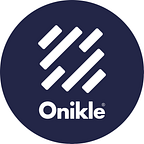What are the options for Scientists?
The classical depiction of a scientist as a person standing behind a table full of chemicals in a white laboratory coat is only valid for certain scientists and typically represents only part of their work. Most scholars never wear a lab coat at all. Many works behind a computer in areas that don’t need lab work to do their job. It could be for teaching or writing about research. Some work as business consultants, or as scientific journal editors. Any scientists are retrained as patent attorneys or as ethicists, using their experience of research in tandem with another field of expertise.
So, what does it meant to work in academics? Based on the scale of an institution, academic careers can differ, but most practitioners with an academic research career have a version of the following the general commitments, such as applying for grants, doing self-directed research, writing articles, teaching classes, mentoring students, and performing departmental work.
On the other hand, working in “industry” can mean many things, includes any research work that happens outside universities is defined by the term. Professionals who chose this path will work for small pharmaceutical start-ups, mid-size businesses, or even multinational organizations. Usually, the field of work centres on applied science and would have immediate, clinical value. A more business-minded strategy often requires in industrial career. As you endorse the strategic agenda of the organization, you must be able to develop initiatives that fulfil the company’s objectives.
Academia is heavily focused on science and exploration, and as opposed to clinical application, much research is undertaken for the sake of learning. In comparison, “industry” study helps researchers to experience a sense of direct effect on company’s revenue. All fields of employment often have their own share of stresses and demands. In academia, the situation of the scholar is always “getting funding and publishing, or perishing.” Academics are under enormous pressure to be self-starters, publish their studies on an ongoing basis, and to encourage and advocate their work. The stresses in industry are usually more time-driven, as teams seek to combine research and market-focused problem solving in conjunction with broader product and business priorities on short project schedules. Therefore, being outstanding communicators and possessing keen individual skills to handle projects is critical for people employed in the industry.
In academia, besides research you have to also teach classes which tend to involve three hours of class time per week in more universities per professor, but this is not the end. Research entails remaining at the top of one’s profession by reviewing all the books and papers that come out on whatever one is meant to remain on top of it involves at the more boring level; and it requires several other items (such as overseeing graduate student research, which means understanding what they are focusing on themselves and reading peer’s work; and writing letters for recommendations. Academic researchers do not have the freedom to perform what ever they want.
Industrial scientists typically earn more money on average than academic researchers. A 2014 Life Sciences Salary Study showed that about 30 percent more was earned by American, Canadian, and European scientists who worked in industry relative to academia. Academics, like postdocs, make $88,693 annually on average, while commercial researchers make $129,507. The image of scientists only working for university or research institution is long gone and there is still rising demand from industry.
If you are interested in our service, please register your email address in the following link to get an early access and test our All-new preprint platform that provides stress-free search experience with AI engine.
Written by Wanonno Iqtyider
